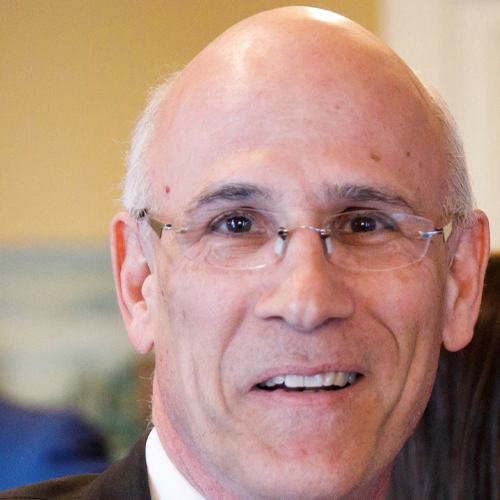
Much of the commentary on the public sector stays at the level of generalities. Exhortations to become more strategic, more inclusive, bolder in advice and better in delivery are impossible to contest. Too often, the discussion stops short of analyzing resistance or tradeoff among objectives. As in so many things, we are much better at diagnosis than agreeing on the remedies.
The list of issues in play these days for the federal public service is already daunting. As well, provincial, territorial and municipal governments have their own agendas. On top of the formal reviews of service delivery and spending launched earlier this year, an incomplete list would include: a new round of collective bargaining just as inflation has spiked; figuring out the post-pandemic workplace; replacing retirements and departures; fragile legacy IT systems; the reverberations of Black Lives Matter and Indigenous reconciliation; cybersecurity and foreign interference; and a trendline of eroding trust in public institutions.
What follows is a brief thought experiment. If the federal government took the advice – something that is unlikely in my view – to create some sort of royal commission or advisory panel on its public service, what are some of the more difficult or “wicked” questions – that would surface? We do not have to wait; we can start debating these issues now. There are more, but I set out just a few of the most uncomfortable ones here.
Insourcing, outsourcing and offloading
The core question of what we should ask the public service to do for us usually comes up only in formal spending reviews, such as the Chretien government’s 1995 program review or the Harper government’s 2012 deficit reduction action plan. They sometimes provoke a re-examination of whether this area of responsibility should be done by public servants, rented from outside contractors, or offloaded to the private sector and civil society.
Sometimes, the federal government retreats from an area and leaves it to provincial and local governments. The mix has shifted and the federal public sector has waxed and waned. The truth is that there is no right answer and we will get an outcome heavily driven by the ideological and political preferences, and the view of federalism, of the government of the day. The point for public sector management is that you can drive for effectiveness or drive for spending cuts, but realistically you can’t do both well at the same time.
Dealing with poor performers
An uncomfortable truth is that not every hire works out and not every employee or executive contributes as much as they should. Some are not effective and some actually drain energy and poison their workplaces. Many people are squeamish about discussing poor performers and toxic employees, and deny they exist in any significant numbers.
The Functionary: Kathryn May’s newsletter on the public service
It is far too difficult to demote or terminate the small number of truly poor performers. An employee can use the multiple recourse processes to drag out proceedings for as much as two or three years. Instead of taking on the exhausting challenge, managers either do their best to work around them or sometimes try to fob them off on others with less than honest references. Colleagues see team members coast along as passengers without consequences and lose motivation.
The solution lies in changing the legal standard for dismissal to a lower bar than the current definition of “cause.” However, it is a wicked problem in practice because making it easier for managers to terminate employees may give some of them an instrument for bullying and harassment that may be wielded with bias. Striking the balance won’t be simple.
No longer letting middle managers do all the hiring
As long as I can remember people have lamented the slow pace of hiring, whether from outside the service or moving people within. The managers and the human resources community point fingers at each other. The uncomfortable truth is that not every middle manager or front-line supervisor is good at hiring – even the ones who struggle to find the time to wade through the huge pools of candidates. They default to looking for credentials and past experience because it is much more effort to assess future potential, but the tools for doing so aren’t very good.
The solution to slow staffing, and to recruiting more talent from outside, could lie in a more directive approach that gives much more authority to the human resource community or a central staffing agency to do the screening and proactively match candidates with vacancies. This is a really uncomfortable topic because the main bottleneck has been a cultural one – middle managers believe they should pick every person on their team, no matter how long it takes. Departments and agencies are culturally averse to shared hiring processes or relying on others. They are scared of false positives and believe they would do a better job. More leeway to remove poor performers could also be a key to faster hiring.
Which forms of inclusion matters more?
Bilingualism has been a cornerstone inclusion policy since 1968, a mindful strategy to ward off Quebec separatism by ensuring that the one-quarter of Canadians who are francophones see themselves in the federal government. The future of bilingualism is a wicked problem in the 2020s, not for externally facing services – which are now largely delivered on websites, apps and call centres – but for the workplace.
Requirements for a degree of proficiency in both of our official languages by supervisors and executives raise uncomfortable issues, including that they have come to be seen as a barrier for some racialized communities and for Indigenous peoples. Should the public service give in to pressure to loosen requirements for French-language proficiency in the pursuit of inclusion? Or would that marginalize francophones and harm recruitment, lead to a downward spiral in language capacity and erode national unity? The uncomfortable truth is that the subtle pressure to work in English is relentless unless the people convening and chairing meetings, asking for documents and performing basic supervision are mindful and proactive.
Even more baffling, why are we still paying bonuses to people who are bilingual instead of investing the same millions of dollars in language training for people who are not?
How flat can you go? How thin is too thin?
One of the common criticisms of the federal public service is that there are too many managers in too many layers. It is contended that there has been a proliferation of new half-steps such as assistant directors, associate assistant deputy ministers and associate deputy ministers. The cumulative effect has been identified as a “clay layer” of management and it is widely believed that the leadership cadre could readily be made leaner, flatter and thinner.
It is an uncomfortable issue because many of the remedies that have been tried or suggested would make it more difficult for the most senior leaders to solve workload and personnel problems for which they are accountable and to keep their organizations up to date with evolving challenges. More constraints means less organizational agility. Any arbitrary reductions, caps or buyout schemes tend to land unevenly and unfairly. The larger organizations are always much more capable of coping than the more numerous smaller ones.
Little boxes
The box-by-box model of jobs dates backs decades and is taken as a given. It is used to define in excruciating detail the duties and accountabilities of each individual position, which then is used to assess what it is worth and therefore what it should be paid.
That model and especially the job classification system used by the public service is well past its best-before date. It slows down staffing, falls behind the shifts in skills and competencies in the real-world labour market, adds enormous complexity to the pay system, and has long favoured policy-related jobs over operations and services. It creates a lot of unproductive busy work.
Past attempts to fix it or to negotiate change through collective bargaining always turned into a quagmire. There are no evident paths forward, but arguably we need a public service that is more nimble and able to shape shift – to move people more easily and to quickly create jobs around specific projects. The daunting and truly wicked challenge is to find a thoughtful approach to streamlining how jobs are classified and paid, and the courage and persistence to look at the core software of the employment model.
Are we serious about leadership or not?
It is common to point to the crucial role of leadership but we don’t back up the rhetoric in practice. We need to find better tools for classifying and compensating executive positions than the ones that have caused us struggles for the past decades. We need to invest heavily in learning and development of the leadership cadre. Politicians are squeamish about what a serious review would tell them – that generally public service jobs are well-paid with attractive pension coverage and benefits, but the higher you go, the less compelling the comparisons with the private sector become. The uncomfortable truth is that compared to the private sector, the public sector underpays its leaders and underinvests in leadership development.
Part of it is ideological – some politicians are so averse to government that they don’t see what public sector leaders do as value-added. This is reinforced by a relentless flow of hostile punditry and media stories about executive “bonuses,” travel expenses and leadership programs. Some politicians are beholden to the public service unions who would balk at higher compensation for managers.
Is better possible?
These are just some highlights of the challenges that would face serious public sector reform. My hope as a new academic is to provoke some research and dialogue that may create actionable options for a future government. As for a royal commission, why wait? Take up any of the issues or go even deeper into structural reforms and propose solutions, not just diagnosis. We can start by leaving the comfort zone.
This is the first in a planned series of articles by Michael Wernick on problems facing the public service.









